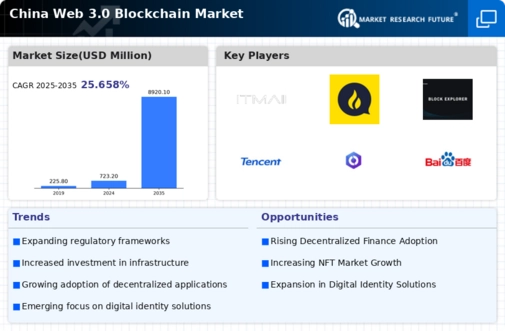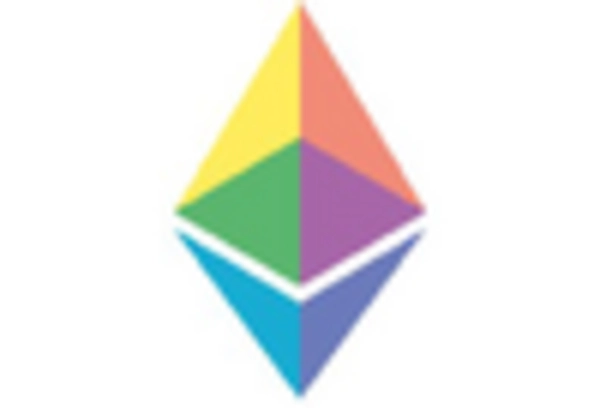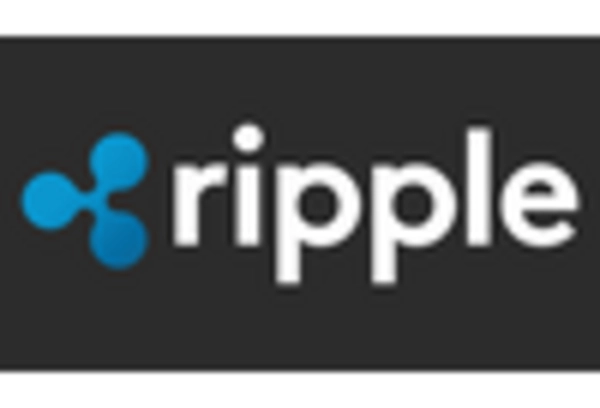Government Initiatives and Funding
The Chinese government is actively promoting the development of the web 3-0-blockchain market through various initiatives and funding programs. In 2025, government-backed projects are expected to allocate over $5 billion towards blockchain research and development. This support is indicative of the government's strategic vision to position China as a leader in blockchain technology. By providing grants and incentives, the government aims to stimulate innovation and encourage startups to explore blockchain applications across different industries. Furthermore, regulatory frameworks are being established to create a conducive environment for blockchain adoption. This proactive approach by the government is likely to accelerate the growth of the web 3-0-blockchain market, making it a crucial driver for future advancements.
Surge in Investment from Tech Giants
The web 3-0-blockchain market in China is experiencing a notable surge in investment from major technology companies. This influx of capital is primarily driven by the recognition of blockchain's potential to revolutionize various sectors, including finance, supply chain, and healthcare. In 2025, investments in blockchain technology are projected to reach approximately $10 billion, reflecting a growth rate of around 30% annually. This trend indicates that tech giants are not only investing in blockchain startups but are also developing their own blockchain solutions. Such investments are likely to enhance the overall ecosystem, fostering innovation and attracting further interest from both domestic and international investors. Consequently, this driver is pivotal in shaping the future landscape of the web 3-0-blockchain market in China.
Rising Demand for Transparency and Security
In the context of the web 3-0-blockchain market, there is an increasing demand for transparency and security among consumers and businesses in China. As data breaches and fraud become more prevalent, organizations are seeking blockchain solutions to enhance their security protocols. The immutable nature of blockchain technology offers a compelling solution for ensuring data integrity and trust. In 2025, it is estimated that around 40% of enterprises in China will adopt blockchain for secure transactions and data management. This growing awareness of the benefits of blockchain technology is likely to drive its adoption across various sectors, including finance, logistics, and healthcare, thereby propelling the web 3-0-blockchain market forward.
Adoption of Smart Contracts in Various Industries
The adoption of smart contracts is becoming a prominent driver in the web 3-0-blockchain market within China. These self-executing contracts, with the terms of the agreement directly written into code, are gaining traction across multiple sectors, including real estate, finance, and supply chain management. In 2025, it is anticipated that the use of smart contracts will increase by approximately 50%, as businesses recognize their potential to streamline operations and reduce costs. This trend suggests that companies are increasingly looking to leverage blockchain technology to enhance efficiency and transparency in their transactions. The growing acceptance of smart contracts is likely to play a crucial role in the evolution of the web 3-0-blockchain market.
Expansion of Blockchain Education and Talent Development
The web 3-0-blockchain market in China is witnessing a significant expansion in education and talent development initiatives. Educational institutions are increasingly offering specialized programs focused on blockchain technology, aiming to equip the workforce with the necessary skills. By 2025, it is projected that over 100 universities in China will have integrated blockchain courses into their curricula. This focus on education is essential for fostering a skilled workforce capable of driving innovation in the blockchain space. Additionally, partnerships between universities and industry players are emerging, facilitating research and development projects. This emphasis on education and talent development is likely to create a robust ecosystem that supports the growth of the web 3-0-blockchain market.

















Leave a Comment